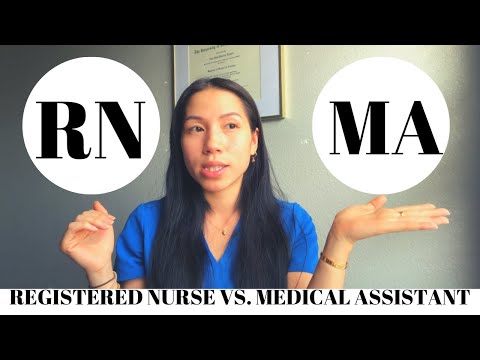Medical Assistant Responsibilities and Daily Activities
Contents
Medical assistants are responsible for a variety of tasks in healthcare offices. Learn more about the medical assistant job description and the daily activities medical assistants perform.
Checkout this video:
Job Description
Duties of a Medical Assistant
A medical assistant is a multi-skilled professional and vital member of the health care delivery team. By performing both clinical and administrative duties, medical assistants help keep the offices of physicians, podiatrists, chiropractors, and other health practitioners running smoothly on a daily basis. With their knowledge of insurance and reimbursement procedures, medical billing and coding, Medical Terminology and computers, medical assistants play an important role in the business side of health care as well as the clinical. The job outlook for medical assistants is excellent. Employment is expected to grow much faster than average due to the increasing number of group practices, clinics, and other healthcare facilities that will require support workers.
Responsibilities
The specific duties performed by medical assistants vary from office to office, depending on the size and location of the practice and the practitioner’s specialty. In small practices, medical assistants usually handle both administrative and clinical duties; in larger practices they may specialize in one or the other. Regardless of the size or location of their employer’s practice or their area of specialization, however, all medical assistants perform certain routine tasks on a daily basis. These may include:
Scheduling appointments
Taking patient histories
Preparing patients for examination
Assisting during examinations
Performing routine laboratory tests
Instructing patients about medication and special diets
Drawing blood
Changing dressings
Administering injections
Where They Work
Most medical assistants work in physicians’ offices. Others work in hospitals, clinics, urgent care centers, out-patient surgery centers, or for agencies that provide Home Health Care services. Many travel with physicians who visit nursing homes or provide home care services to homebound patients.
Duties and Responsibilities
Medical assistants are multi-skilled health professionals specifically trained to work in outpatient settings such as medical offices and clinics. Their duties and responsibilities vary with the location, specialty, and size of the practice. In small practices, medical assistants typically are responsible for a variety of administrative, clerical, and clinical tasks.
In larger practices, medical assistants usually are assigned specific duties. For example, some may perform primarily administrative tasks, such as greeting patients, scheduling appointments, answering telephones, handling correspondence, and completing insurance forms. Others may be responsible for mainly clinical tasks, taking patient histories and vital signs, preparing patients for examination, drawing blood, providing instructions for treatment at home, and handling laboratory specimens
Qualifications
In order to become a medical assistant, one must have a high school diploma or equivalent. A student interested in this field can take a one-year course which will give them the skills and knowledge needed to become certified and perform their duties.
There are many programs that offer certification for medical assistants, but it is not required in all states. However, certification will make you more attractive to potential employers.The American Association of Medical Assistants (AAMA) offers the Certified Medical Assistant (CMA) certification, which is recognized in all states.
To be eligible for certification, you must have graduated from a medical assistant program accredited by the Commission on Accreditation of Allied Health Education Programs (CAAHEP) or the Accrediting Bureau of Health Education Schools (ABHES).You must also have taken and passed the CMA Certification/Recertification Exam administered by the AAMA.
Skills
A medical assistant is a multi-skilled professional who works closely with physicians, both in the office and in the hospital setting. Medical assistants perform many administrative duties, such as scheduling appointments, answering phones, and handling billing and insurance paperwork. They also take patient histories and measure vital signs, among other clinical tasks.
An ability to multi-task is essential for medical assistants, as they are often called upon to handle a variety of tasks simultaneously. They must be able to prioritize their work and be organized in order to keep the office running smoothly. Good people skills are also important, as medical assistants regularly interact with patients who may be anxious or in pain.
Education and Training
Medical assistants are trained on the job or through postsecondary educational programs. Although not required, certification may be beneficial for job seekers. The National Commission for Certifying Agencies and the Accrediting Bureau of Health Education Schools accredit medical assistant programs. Eligible students usually complete a one- or two-yearprogram to earn a certificate or diploma. Some community colleges offer associate degree programs in medical assisting, which take about two years to complete.
Salary and Job Outlook
The average salary for a medical assistant is $32,000 per year, with the top earners making more than $40,000 per year. The job outlook for medical assistants is positive, with an expected growth rate of 29% between 2016 and 2026.
Medical assistants perform a variety of administrative and clinical tasks to support the work of physicians and other healthcare professionals. Their duties may include scheduling appointments, taking and recording medical histories and vital signs, preparing patients for examinations, conducting laboratory tests, assisting with minor office procedures, and giving patient instructions.
Certification
There are several nationally recognized certifying organizations for medical assistants, and most states do not require certification for MA’s to practice. However, many employers prefer or require certification as a credential, and some states have certification laws. Certification gives credibility to the medical assistant profession and demonstrates a commitment to quality patient care. It also may lead to career advancement and higher wages.
There are generally two types of medical assistant certification: the Registered Medical Assistant (RMA) credential and the Certified Medical Assistant (CMA) credential. The RMA credential is administered by the American Medical Technologists (AMT) organization, while the CMA credential is administered by the American Association of Medical Assistants (AAMA). Both organizations offer examinations that test knowledge in multiple areas, including medical law and ethics, patient confidentiality, administration of medication, and medical office management. Candidates who pass these examinations receive a professional designation that they can use after their name. For example, an RMA would be listed as “John Smith, RMA” and a CMA would be listed as “John Smith, CMA.”
Career Paths
There are many different paths you can take as a medical assistant. You can work in a variety of settings, including clinics, hospitals, and physicians’ offices. You can also specialize in a certain area of medicine, such as podiatry or optometry. The sky’s the limit when it comes to your career as a medical assistant!
No matter what path you take, you will be responsible for performing a variety of tasks on a daily basis. These tasks may include taking patient vital signs, administering injections, scheduling appointments, and updating medical records You will also be responsible for educating patients about their conditions and answering any questions they may have.
If you are interested in a career as a medical assistant, be sure to research the different paths you can take. There is sure to be one that is perfect for you!
Job Opportunities
Medical assistants are in demand and there are many job opportunities available. With the right training, you can join this growing profession and enjoy a rewarding career.
As a medical assistant, you will be responsible for a variety of tasks. These may include administrative duties, such as answering phones and scheduling appointments, or clinical duties, such as taking medical histories and measuring vital signs. You will also be responsible for assisting the physician with office procedures and patient education.
The daily activities of a medical assistant vary depending on the type of practice in which they work. In a small clinic, you may be responsible for all aspects of patient care. In a large hospital or Medical Center you may specialize in one area, such as billing or insurance reimbursement. No matter what type of facility you work in, you will need to be able to multitask and handle a variety of tasks simultaneously.
FAQs
1. What are the responsibilities of a medical assistant?
2. What are the daily activities of a medical assistant?
3. How can I become a medical assistant?
1. Medical assistants are responsible for providing patient care and performing administrative tasks in doctor’s offices and other healthcare facilities. They may take vital signs, measure and document patients’ medical histories, schedule appointments, prepare patients for examinations, assist with procedures and provide instructions for follow-up care.
2. The daily activities of a medical assistant vary depending on the specific duties assigned by their employer, but may include scheduling appointments, taking patient vitals, documenting medical histories, preparing patients for examinations, assisting with procedures and providing instructions for follow-up care.
3. To become a medical assistant, you will need to complete an accredited training program and pass a certification exam. Some states also require licensure.







